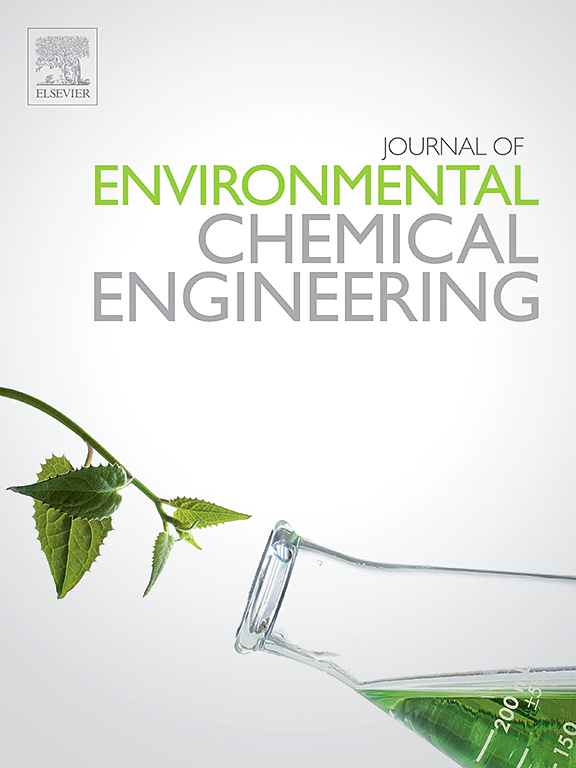Heterogeneous photocatalysis as an efficient process for degrading MPs/NPs in aqueous media: A systematic review
IF 7.4
2区 工程技术
Q1 ENGINEERING, CHEMICAL
引用次数: 0
Abstract
Plastic waste has become one of the most pressing environmental issues due to the resistance of these materials to natural degradation. Over time, they break down into microplastics (MPs) and nanoplastics (NPs), posing a serious problem, especially in water pollution, and can have significant impacts on the quality of human, animal, and plant life. Several emerging strategies are being explored to combat this pollution, with the emergence of semiconductors as effective and sustainable heterogeneous photocatalysts for degrading MPs/NPs. The strategy is promising for tackling this social and environmental challenge. Therefore, this review begins by addressing the systemic issue of MPs/NPs in aquatic environments, emphasizing their occurrence, effects and degradation processes. It then outlines the application of heterogeneous photocatalysis for the degradation of MPs and NPs. In addition, we present some significant recent research into the upcycling approach, which involves transforming plastic waste into chemical inputs with high added value. We then explore the current limitations and future challenges in advancing this field of study.
多相光催化在水介质中降解MPs/NPs:系统综述
塑料垃圾已成为最紧迫的环境问题之一,由于这些材料的抵抗自然降解。随着时间的推移,它们会分解成微塑料(MPs)和纳米塑料(NPs),这构成了一个严重的问题,尤其是在水污染方面,并可能对人类、动物和植物的生活质量产生重大影响。随着半导体作为降解MPs/NPs的有效和可持续的非均相光催化剂的出现,人们正在探索几种新兴的策略来对抗这种污染。该战略有望解决这一社会和环境挑战。因此,本文首先从水生环境中MPs/NPs的系统性问题着手,重点介绍它们的发生、影响和降解过程。然后概述了多相光催化降解MPs和NPs的应用。此外,我们还介绍了最近一些关于升级回收方法的重要研究,其中包括将塑料废物转化为具有高附加值的化学投入物。然后,我们探讨了当前的限制和未来的挑战,以推进这一研究领域。
本文章由计算机程序翻译,如有差异,请以英文原文为准。
求助全文
约1分钟内获得全文
求助全文
来源期刊

Journal of Environmental Chemical Engineering
Environmental Science-Pollution
CiteScore
11.40
自引率
6.50%
发文量
2017
审稿时长
27 days
期刊介绍:
The Journal of Environmental Chemical Engineering (JECE) serves as a platform for the dissemination of original and innovative research focusing on the advancement of environmentally-friendly, sustainable technologies. JECE emphasizes the transition towards a carbon-neutral circular economy and a self-sufficient bio-based economy. Topics covered include soil, water, wastewater, and air decontamination; pollution monitoring, prevention, and control; advanced analytics, sensors, impact and risk assessment methodologies in environmental chemical engineering; resource recovery (water, nutrients, materials, energy); industrial ecology; valorization of waste streams; waste management (including e-waste); climate-water-energy-food nexus; novel materials for environmental, chemical, and energy applications; sustainability and environmental safety; water digitalization, water data science, and machine learning; process integration and intensification; recent developments in green chemistry for synthesis, catalysis, and energy; and original research on contaminants of emerging concern, persistent chemicals, and priority substances, including microplastics, nanoplastics, nanomaterials, micropollutants, antimicrobial resistance genes, and emerging pathogens (viruses, bacteria, parasites) of environmental significance.
 求助内容:
求助内容: 应助结果提醒方式:
应助结果提醒方式:


